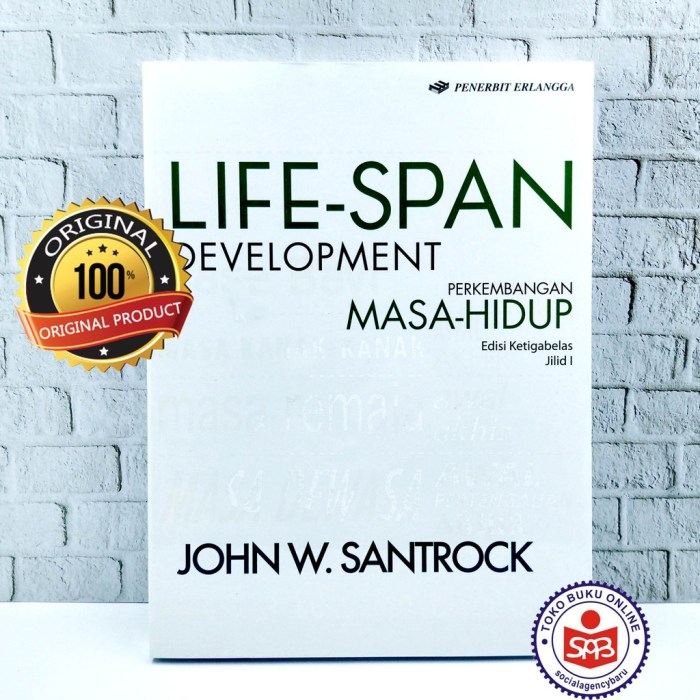Embark on an in-depth exploration of human development across the lifespan with Life Span Development 17th Edition, the seminal work that illuminates the intricacies of physical, cognitive, social, and emotional changes that shape individuals from conception to old age. This authoritative guide delves into the latest research and theories, providing a comprehensive understanding of human development and its implications for education, health care, and social policy.
Uncover the profound impact of biological, psychological, and social factors on development, and gain insights into the major transitions and challenges that individuals face throughout their lives. Explore the diverse contexts that shape development, including cultural, socioeconomic, and historical influences.
With its wealth of knowledge and practical applications, Life Span Development 17th Edition empowers readers to promote equity, inclusion, and well-being for individuals across the lifespan.
Introduction to Life Span Development 17th Edition
The 17th edition of Life Span Development provides a comprehensive overview of the field, from conception to late adulthood. It includes the latest research on physical, cognitive, social, and emotional development, as well as the major transitions and challenges that occur throughout the life span.
Key themes in this edition include the importance of context, the role of diversity, and the application of life span development principles to real-world settings.
Organization of the Book
The book is organized into eight parts:
- Introduction
- Theoretical Foundations
- Physical Development
- Cognitive Development
- Social and Emotional Development
- Major Transitions and Challenges
- Life Span Development in Diverse Contexts
- Applications of Life Span Development
Theoretical Foundations of Life Span Development
The major theories of life span development provide a framework for understanding the complex processes of human development. These theories include:
- Psychodynamic theory
- Behaviorism
- Cognitive theory
- Humanistic theory
- Systems theory
Each of these theories emphasizes different aspects of development, and together they provide a comprehensive understanding of the factors that influence human development.
Role of Biological, Psychological, and Social Factors
Development is influenced by a complex interplay of biological, psychological, and social factors. Biological factors include genetics, nutrition, and physical health. Psychological factors include personality, temperament, and cognitive abilities. Social factors include family, peers, culture, and socioeconomic status.
The interaction of these factors creates a unique developmental trajectory for each individual.
Lifespan Stages and Transitions
The life span is typically divided into a series of stages, each with its own unique characteristics and challenges. These stages include:
- Prenatal period
- Infancy
- Early childhood
- Middle childhood
- Adolescence
- Early adulthood
- Middle adulthood
- Late adulthood
Transitions between stages are often marked by significant changes in physical, cognitive, social, and emotional development.
Physical Development Across the Life Span

Physical development involves the changes in the body’s size, shape, and composition that occur throughout the life span. These changes are influenced by a variety of factors, including genetics, nutrition, and physical activity.
During the prenatal period, the body undergoes rapid growth and development. At birth, the average newborn weighs about 7 pounds and is about 20 inches long.
During infancy, the body continues to grow rapidly. The average one-year-old weighs about 22 pounds and is about 30 inches long.
During early childhood, the growth rate slows down. The average five-year-old weighs about 40 pounds and is about 44 inches long.
During middle childhood, the growth rate continues to slow down. The average ten-year-old weighs about 70 pounds and is about 54 inches long.
During adolescence, the growth rate accelerates again. The average fifteen-year-old weighs about 120 pounds and is about 64 inches long.
During early adulthood, the growth rate slows down again. The average twenty-year-old weighs about 150 pounds and is about 68 inches long.
During middle adulthood, the growth rate continues to slow down. The average forty-year-old weighs about 160 pounds and is about 69 inches long.
During late adulthood, the growth rate slows down even further. The average sixty-five-year-old weighs about 150 pounds and is about 68 inches long.
Implications for Overall Health and Well-being, Life span development 17th edition
Physical development has a significant impact on overall health and well-being. For example, children who are overweight or obese are at increased risk for a variety of health problems, including heart disease, stroke, and diabetes.
Adults who are overweight or obese are also at increased risk for a variety of health problems, including heart disease, stroke, and diabetes.
Regular physical activity can help to maintain a healthy weight and reduce the risk of chronic diseases.
Questions Often Asked: Life Span Development 17th Edition
What are the key themes of Life Span Development 17th Edition?
The key themes include the importance of context, the role of plasticity and change throughout the lifespan, the influence of diversity on development, and the application of lifespan development principles to real-world settings.
How does Life Span Development 17th Edition address diversity?
The book recognizes the profound impact of cultural, socioeconomic, and historical factors on development and provides strategies for promoting equity and inclusion in research and practice.
What are the implications of lifespan development research for education?
Understanding lifespan development principles can help educators tailor teaching methods and curricula to meet the unique needs of learners at different stages of their lives.